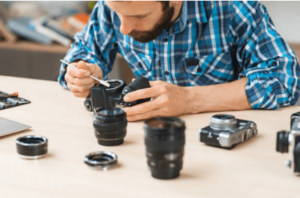Editing Video Footage: Essential Techniques
Video editing is an essential skill in today’s digital world. Whether you’re creating content for YouTube, producing a short film, or working on a professional project, knowing how to edit video footage effectively can make a significant difference. This article will cover the essential techniques you need to edit video footage like a pro.
Understanding the Basics of Video Editing
What is video editing?
Video editing involves manipulating and rearranging video shots to create a new work. It’s the process that brings together visuals, sound, and narrative to produce a cohesive and compelling story.
Key terms in video editing
- Cut: Removing a part of a clip.
- Trim: Adjusting the start and end points of a clip.
- Transition: Effects between clips.
- Timeline: The area where video and audio clips are arranged.
Choosing the Right Software
Popular video editing software
- Adobe Premiere Pro: Industry standard for professionals.
- Final Cut Pro X: Popular among Mac users.
- DaVinci Resolve: Known for color grading capabilities.
- iMovie: User-friendly option for beginners.
Factors to consider when choosing software
Consider your budget, the complexity of the projects you plan to work on, and the learning curve of the software. Free trials are often available to help you make an informed decision.
Importing and Organizing Footage
Importing video clips
Start by importing all your footage into your chosen editing software. This usually involves dragging and dropping files into the program or using the import function.
Organizing your workspace
Keep your files organized with folders and labels. This makes it easier to find clips and maintain a smooth workflow.
Cutting and Trimming Clips
Basic cutting techniques
Cutting is the most basic yet crucial part of video editing. It involves selecting the portions of your footage that you want to keep and removing the rest.
Tips for efficient trimming
Use shortcuts to speed up the process. Most software allows you to use keyboard shortcuts to cut and trim clips quickly.
Adding Transitions
Types of transitions
- Cuts: Instant transitions from one clip to another.
- Fades: Gradual transitions, often used at the beginning or end of a video.
- Dissolves: Blend one clip into another.
How to apply transitions effectively
Use transitions sparingly to maintain a professional look. Overuse can make your video look amateurish.
Incorporating Visual Effects
Common visual effects
- Slow motion: Slowing down a clip for dramatic effect.
- Green screen: Replacing the background of a shot.
- Stabilization: Reducing camera shake.
Tools for adding effects
Most editing software comes with built-in effects. Explore the effects library and experiment with different options.
Color Correction and Grading
Importance of color correction
Color correction ensures that your footage looks natural and consistent. It involves adjusting the colors in your video to correct any issues.
Techniques for color grading
Color grading is about creating a mood or style. Use tools like LUTs (Lookup Tables) to apply color grades to your footage.
Working with Audio
Syncing audio and video
Ensure that your audio and video are in sync. This is especially important for dialogue-heavy videos.
Enhancing audio quality
Use tools to remove background noise, equalize audio levels, and add effects like reverb or echo.
Adding Titles and Text
Creating titles and lower thirds
Titles and lower thirds provide context and information. Use them to introduce segments or highlight important points.
Best practices for text overlays
Keep text short and readable. Use contrasting colors to ensure your text stands out.
Using Motion Graphics
Introduction to motion graphics
Motion graphics add a dynamic element to your videos. They can be used for intros, transitions, and more.
Tools and techniques for motion graphics
Software like Adobe After Effects is commonly used for creating motion graphics. Tutorials are widely available to help you get started.
Creating a Cohesive Story
Storyboarding and planning
Plan your video before you start editing. A storyboard helps visualize the sequence of shots and ensures a logical flow.
Ensuring narrative flow
Arrange your clips in a way that tells a clear and engaging story. Pay attention to pacing and transitions.
Exporting and Sharing Your Video
Export settings for different platforms
Each platform has its own optimal settings for video. Check the recommended settings for YouTube, Vimeo, Instagram, etc.
Tips for uploading and sharing
Compress your video to balance quality and file size. Use descriptive titles and tags to improve discoverability.
Common Mistakes to Avoid
Overused effects
Avoid overloading your video with effects. Keep it simple and let your content shine.
Poor organization and workflow
Stay organized to maintain efficiency. A cluttered workspace can lead to mistakes and slow down your editing process.
Editing video footage is a skill that can always be improved upon. By mastering these essential techniques, you can create stunning videos that captivate your audience. To ensure you have the best equipment for your projects, don’t miss our comprehensive guide on What features should I look for when selecting a digital camera?
RELATED POSTS

How Can You Fix Focus Issues in a Camera Lens That Consistently Produces Soft or Blurry Images?

How Photographers Can Optimize Their Use of Multifunctional Control Dials for Faster Adjustments ?

What are the essential features to look for when buying a lens?

